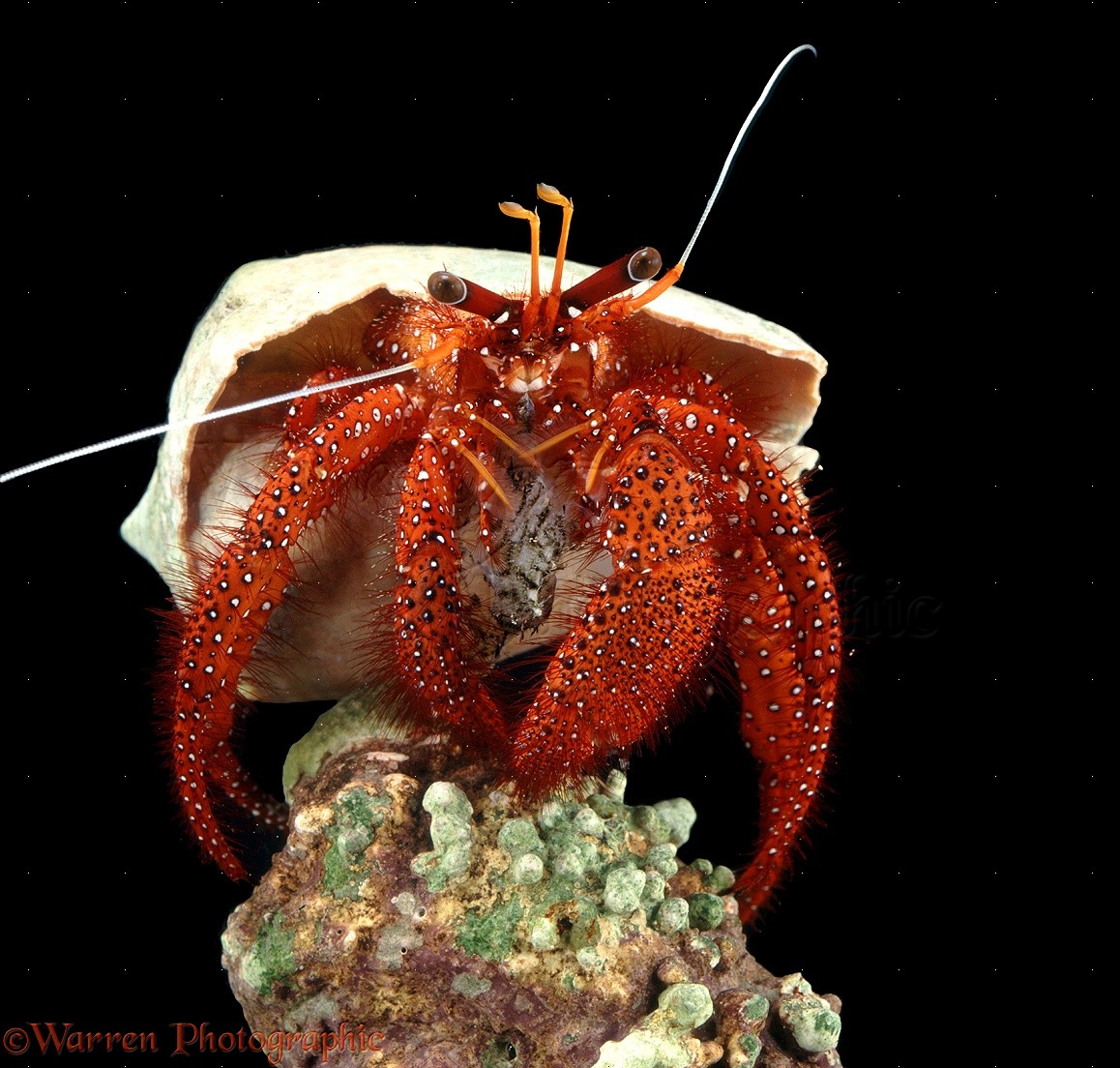
Red hermit crab photo WP22618
Ar-1410 GIANT RED HERMIT CRAB, Petrochirus diogenes It is the largest species in the Western Atlantic. Its hairy red body, massive lobster like claws and bluish stalked eyes are a study in crustacean magnificence. Sporadic. BIOLOGY The right claw is the larger and most dominant claw.
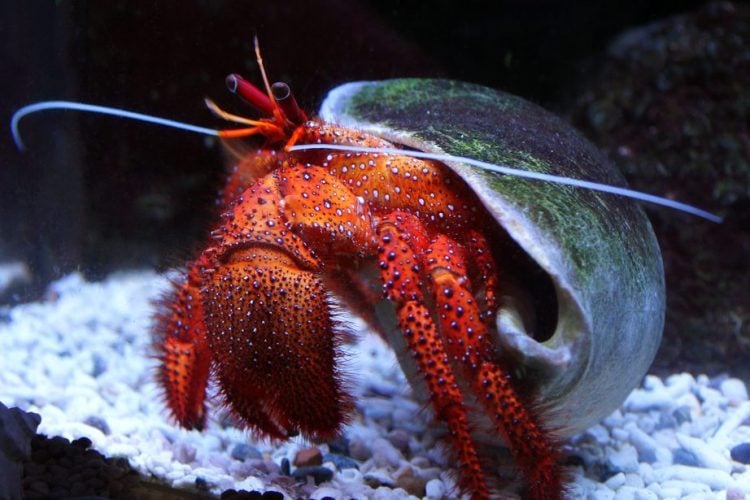
Red Hairy Hermit Crab For Sale (Dardanus megistos). TOP Care facts
The Red Leg Hermit Crab is an excellent algae eater for any aquarium. They are one of the few hermit crabs that may eat cyanobacteria red slime algae and are considered one of the staples of marine aquarium "clean-up crews". Most hermit crabs are scavengers.

The Hermit Crabs we find. March 2016 Cruising The Edge
Red leg hermit crabs are known for their striking appearance, with bright red legs contrasting against their dark brown or black bodies. One of the primary benefits of having red leg hermit crabs in your tank is their ability to control algae growth. They're voracious eaters and will happily devour any excess algae present on rocks, substrate.

red hermit crab south diamond islet 4 Cruising The Edge
1.3 ounces to 11 pounds What is a hermit crab? There are over 800 species of hermit crabs worldwide, and almost all are ocean dwellers—though people are likely most familiar with the dozen.

Red Hermit Crab Stock Image C031/9615 Science Photo Library
Hermit crabs are anomuran decapod crustaceans of the superfamily Paguroidea that have adapted to occupy empty scavenged mollusc shells to protect their fragile exoskeletons. [1] [2] [3] There are over 800 species of hermit crab, most of which possess an asymmetric abdomen concealed by a snug-fitting shell.
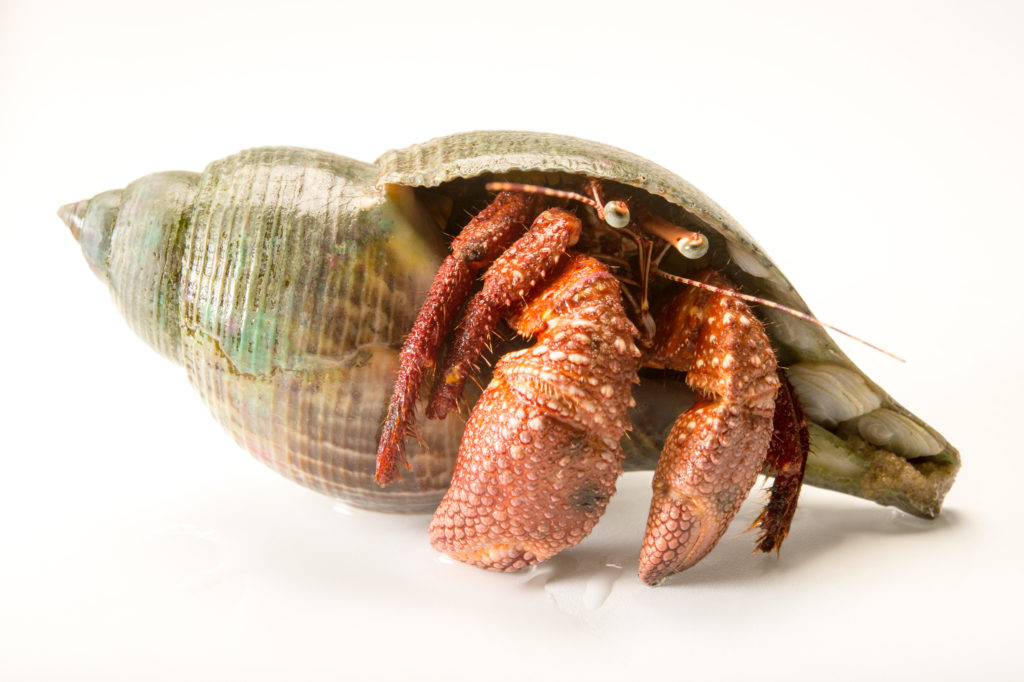
Giant Red Hermit Gulf Specimen Marine Lab
Like its Blue Leg cousin, the Dwarf Red Tip Hermit Crab serves as an ideal member of your marine or reef aquarium's cleanup crew. Also known simply as the Red Tip Hermit Crab, this omnivore will scavenge all over your live rock and sand substrate - finding its way into the tightest of spaces - to feed on algae and detritus.

Filitheyo Red Hermit Crab cropped Andreas Graemiger Flickr
The red reef hermit crab is a scavenger, feeding on animal and vegetable detritus. The sexes are separate in this species and it breeds throughout the year. The eggs are orange and hatch into planktonic larvae. When these settle on the seabed, the juvenile hermit crabs need to search for a suitable shell to occupy.

Giant red hermit crab Species Two Oceans Aquarium Official
The dwarf red tip hermit crab is native to the coastal waters around Central America. In home aquariums, this hermit crab prefers sand in which it can forage and dig. It is known for its scavenger tendencies and will do an excellent job cleaning all the crevices of a tank to control algae growth while aerating the sand. Species Overview
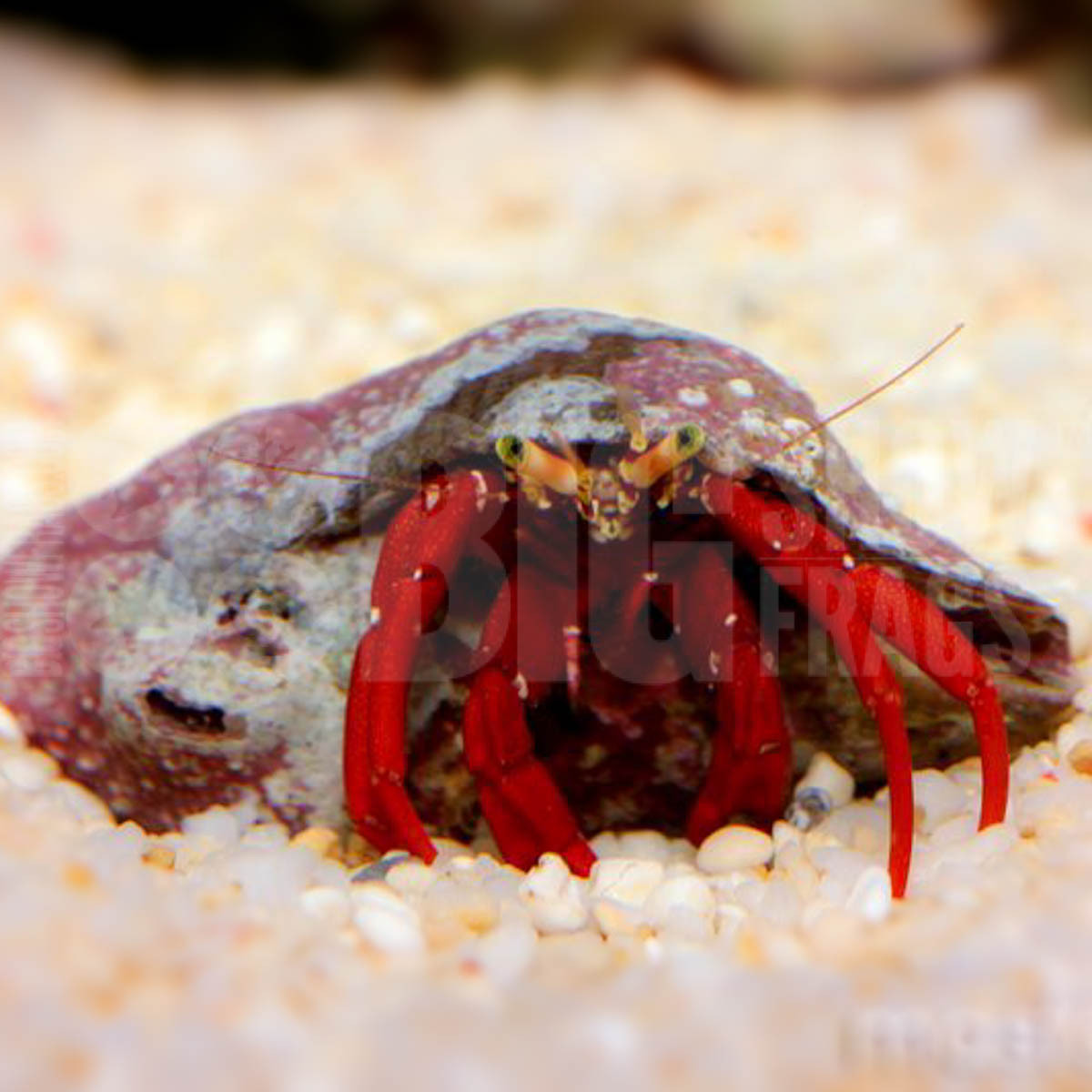
Red Scarlet Hermit Crab BIGShow Frags
The ideal water temperature for hermit crabs is between 72-78°F. A heater and thermometer can be used to ensure the water temperature remains stable. It is important to maintain good water quality in the aquarium to keep the hermit crabs healthy. A good filtration system should be used to remove waste and maintain water quality.

Large Red Hermit Crab Photograph by Carol McGunagle
Notice the dark purple legs with red . . . 1 / 4 Coenobita clypeatus The Caribbean crab has many nicknames, such as the purple pincher crab, tree crab, and soldier crab. They usually have deep purple or brown legs with a little orange or red, as well as a tan head, often with a dark spot on it.
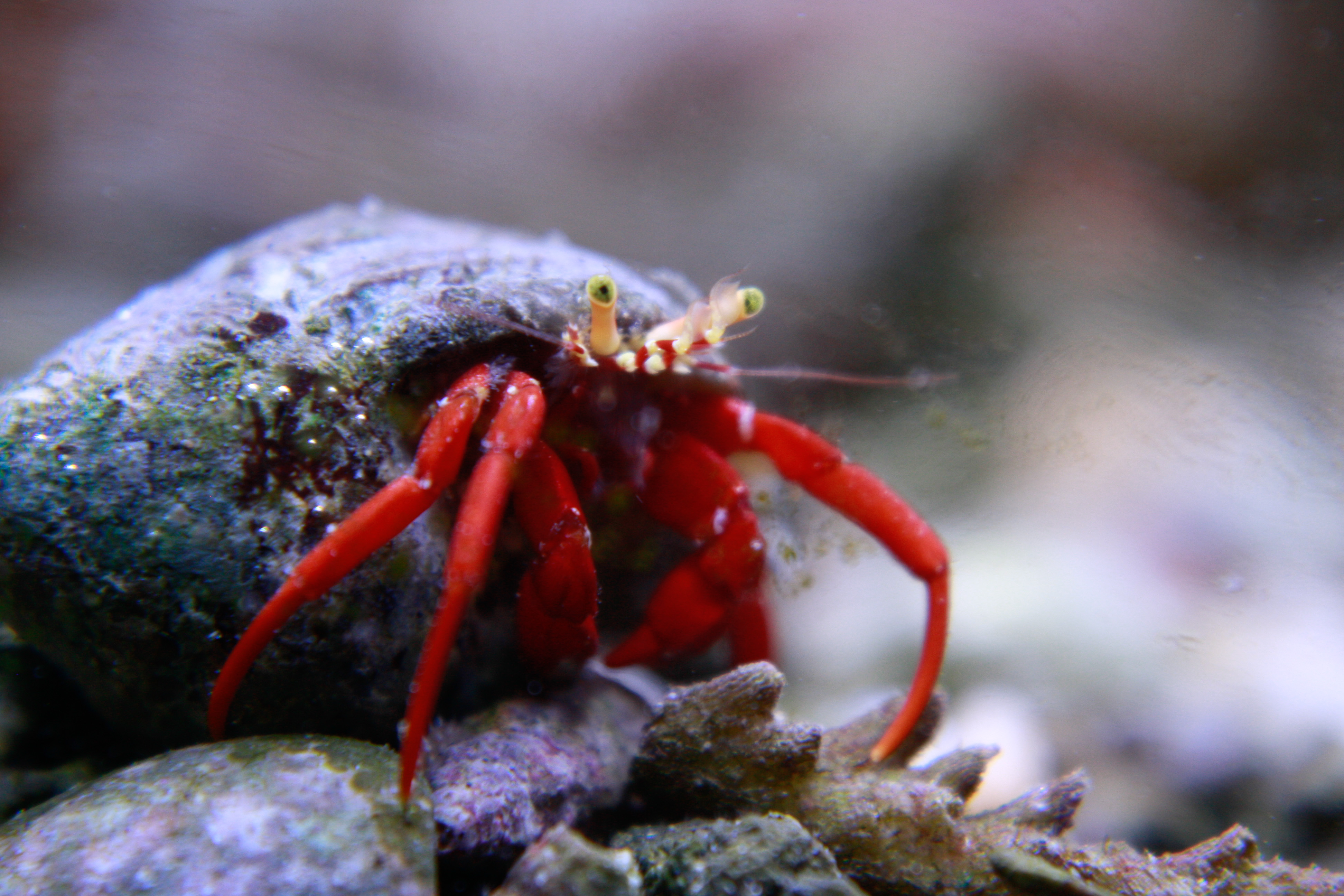
Mexican Red Leg Hermit Crab Shutterbug
Tiny Red leg, Paguristes cadenati, and Blue leg hermits, Clibanarius tricolor, come from The Caribbean, and are pretty and reef safe, though beware as many larger species have red legs and even blue legs too. Black shell hermits and White shell hermits come from the Philippines and are traded as Calcinus sp.
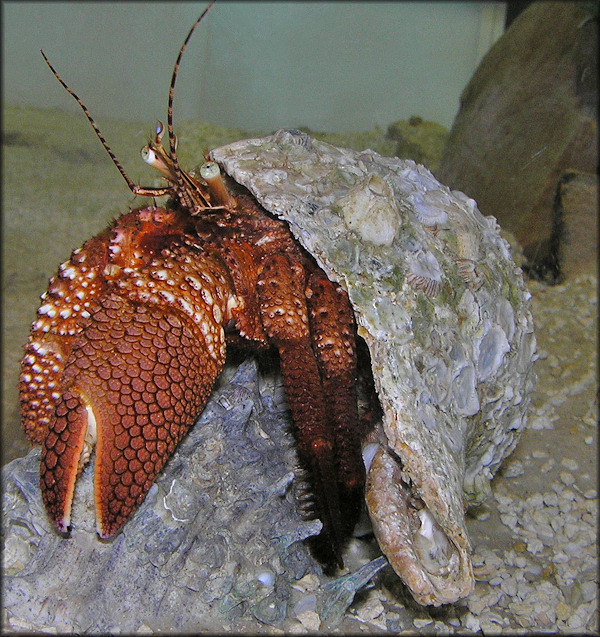
giant red hermit crab Gulf Specimen Marine Lab
1. Caribbean Hermit Crab (Coenobita clypeatus) Origin: Western Atlantic Price: $3 to $25 Size: Up to 6 inches Color: Dark purple or brown The most common type of hermit crab in the pet trade, the Caribbean crab has many nicknames including West Atlantic crab, tree crab, soldier crab, and purple pincher crab.
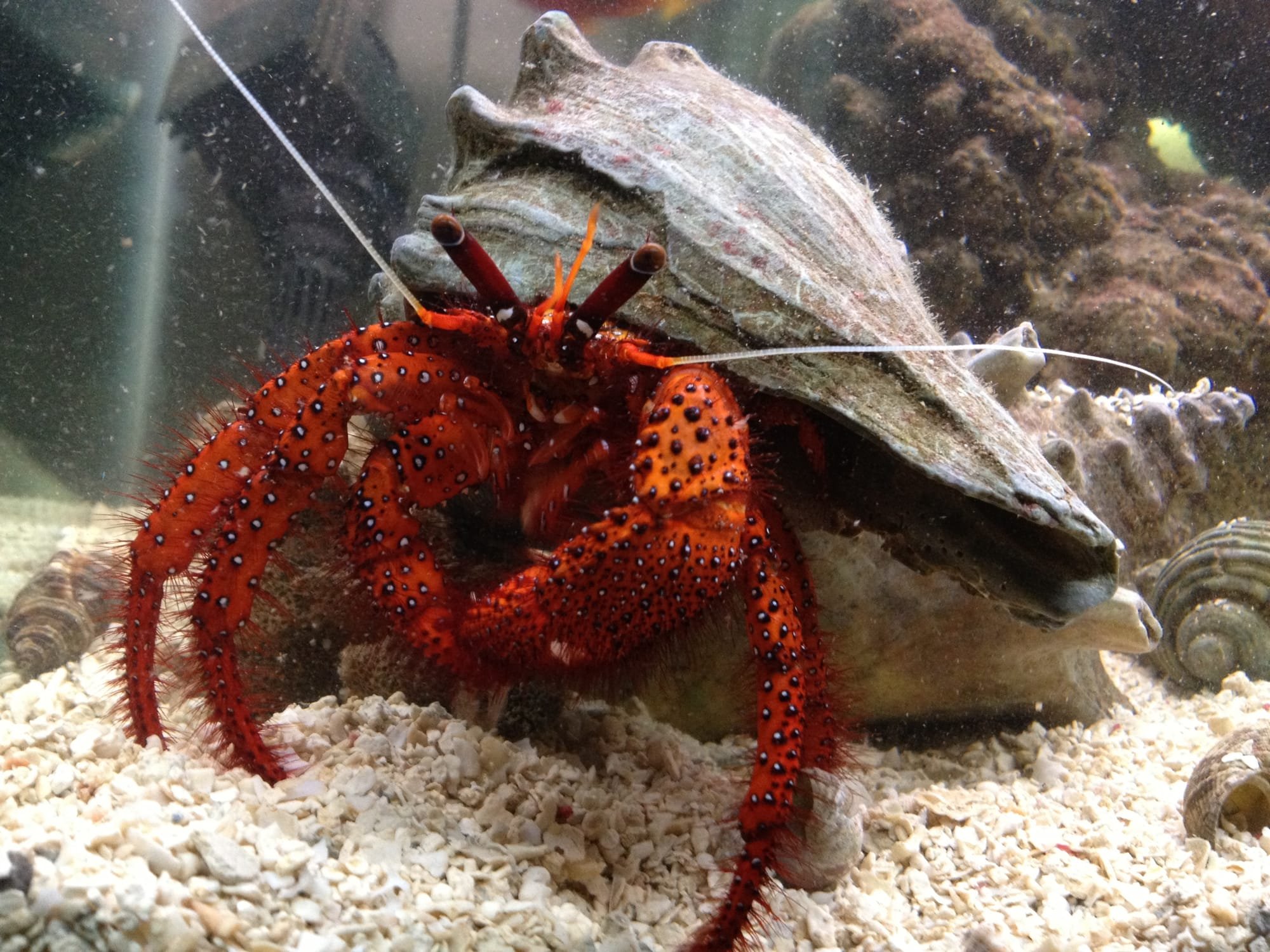
Red Hermit Crab Clark's Aquarium Service
The red-clawed hermit crabs are a group of small, terrestrial isopods that live in the intertidal zone. They have been found on all continents except Antarctica and Australia. The species vary greatly in size from less than 1 cm to over 10 cm long. Most species can be distinguished by their coloration: they range from dark brown or black with.

Red Scarlet Hermit Crab —
Also known as the Red Reef or Red Legged Hermit Crab, the Scarlet Reef Hermit Crab is named for its bright red legs, which are contrasted by their yellow face. Native to the reef faces and coral rubble of the Caribbean and Western Atlantic, these active scavengers can consume large amounts of animal matter and algae.

Red Hermit Crab Stock Image C008/7015 Science Photo Library
Scientific Name Paguroidea Read our Complete Guide to Classification of Animals. Hermit Crab Conservation Status Near Threatened Hermit Crab Locations Ocean Hermit Crab Facts Main Prey Fish, Worms, Plankton Habitat Coastal waters Predators

Red Tip Hermit Crab
Hermit Crabs are generally peaceful and social organisms that live in large groups in the wild. Larger species will be more aggressive than smaller species and may even attack your fish. Smaller reef compatible species are mostly peaceful however, you may find that they fight with each other.